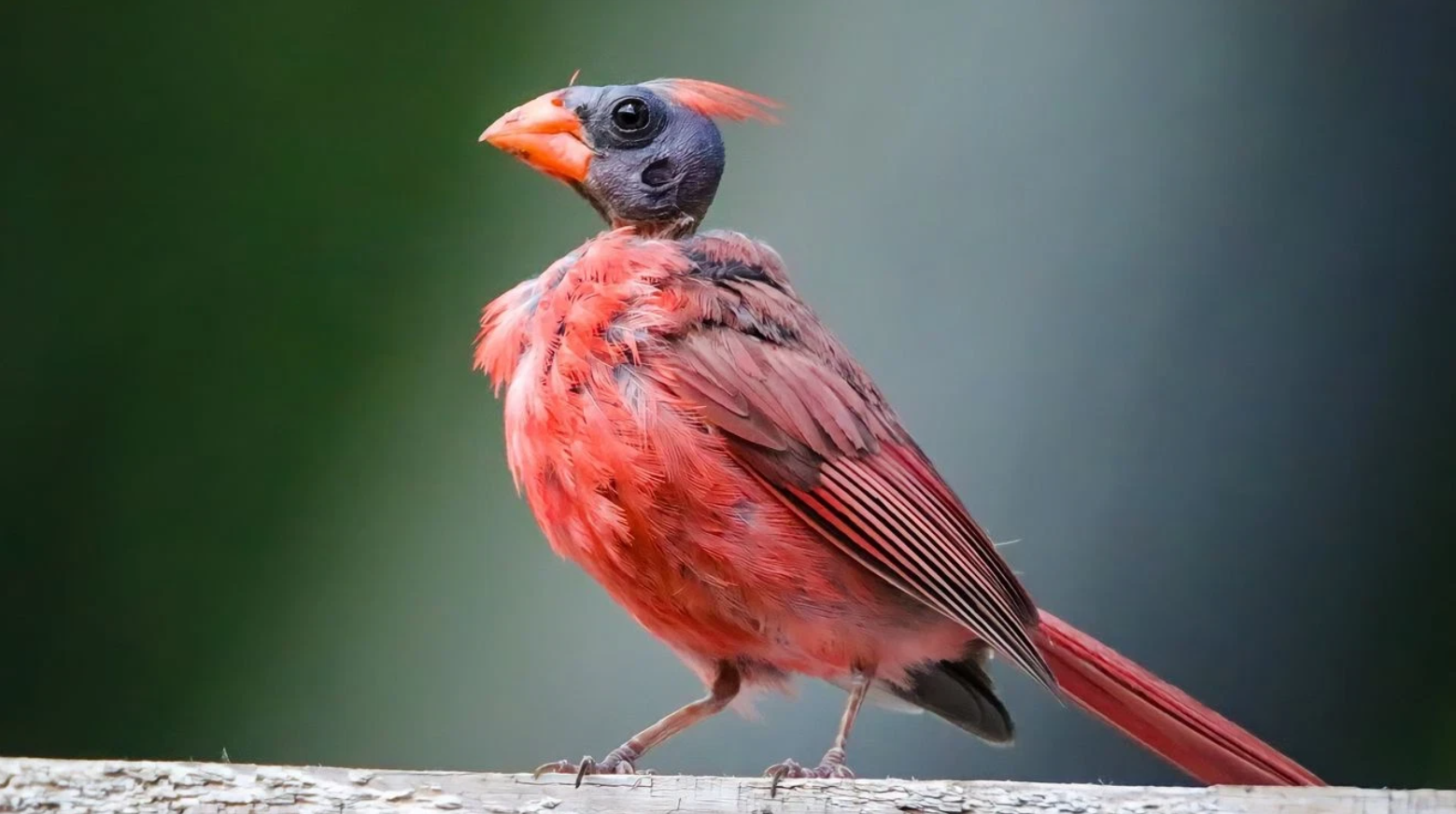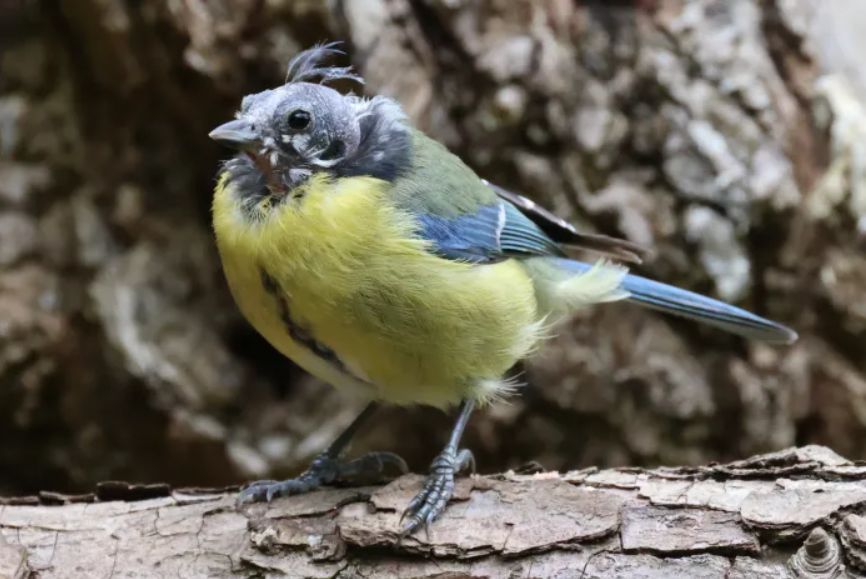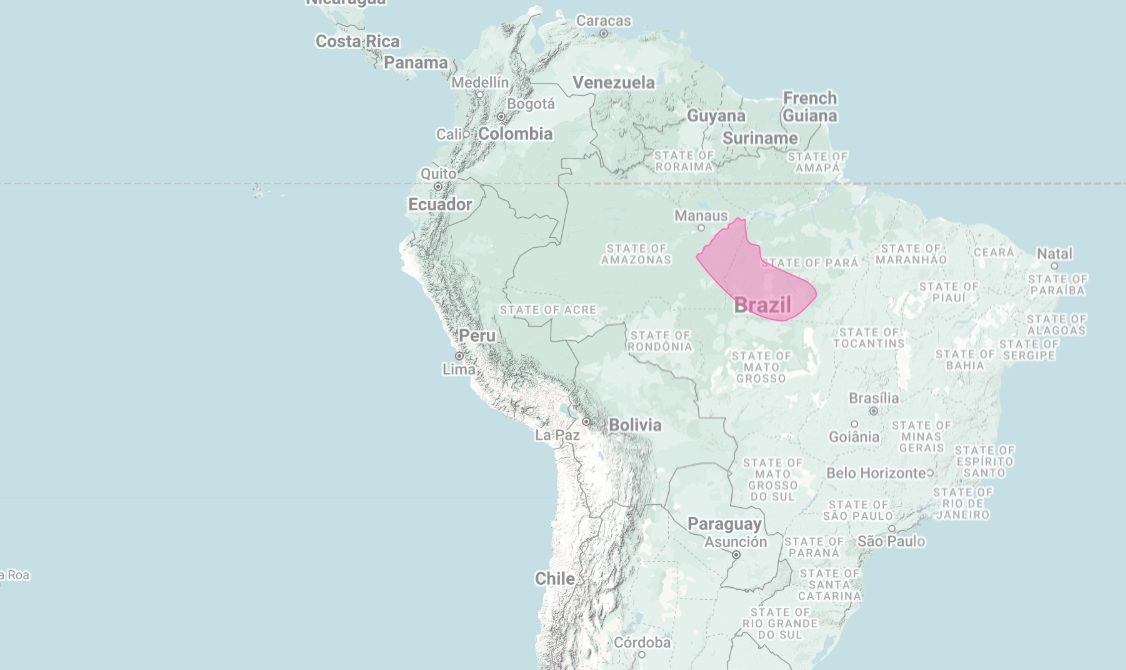Bald Parrot
Pyrilia aurantiocephala
The bald parrot is a species that lacks any head feathers — apart from some sparse bristles. Endemic to the east-central Amazon, its baldness might be an adaptation for eating fruit without getting its feathers sticky.
Bald Birds
Why do birds go bald?
Why do bald blue jays, their heads vulturine and skinny, show up at your bird feeder, or some northern cardinals look like they've taken a blowtorch to the face? Why are there balding blue tits, with a newborn bird's head on an adult body, or common mynas sans their black feather masks, their heads looking like shrivelled little lemons, left too long in the sun?
Usually, a bird's baldness is due to a natural process known as moulting, wherein old feathers are discarded to be replaced by new ones. Most birds lose and grow feathers in stages to avoid big patches of naked skin, but sometimes a bird has a bad hair day — or a bad few weeks, often between late summer and early fall — and it's usually not the elderly who go bald, but juveniles undergoing their first moult. After this awkward stage of teenage baldness, the feathers grow back.
Birds don't suffer from pattern baldness. Unless an ave is afflicted with a health complication — disease, stress, nutrient deficiency, or parasites — it can maintain a luscious head of feathers into its twilight years, just as Cookie, the world's oldest cockatoo, did until his passing at the age of 83. That is, unless you're a bald parrot.
The Bald Parrot
There are bald parrots and there are bald parrots.
Any of the 400 parrot species can suffer from an awkward moult, from mites nibbling at the shafts of their feathers, or from stress-induced feather pulling — making them bald parrots. But they are not the Bald Parrots.
Near the turn of the millennium, Brazilian researchers in the eastern Amazon collected several specimens of a small parrot. Its body was dressed in pretty hues of forest green, tinted with yellow and blue, it flaunted bright red underwings in flight, and wore a frilly yellow collar around the base of its intensely orange, almost-completely bald head. From prior sightings, these bald birds were described as the immature members of another species — the vulturine parrot, researchers reckoned.¹ But these orange-headed baldies didn't intermingle with the supposed adults of their species, instead forming entire flocks of their own. Young bachelor flocks, perhaps, or teenagers with some contempt for their elders? In 1999, the "immature" parrots were finally caught and examined, and were found to have fully developed skulls and gonads — i.e. they weren't immature at all.
The bald parrot, Pyrilia aurantiocephala, is an entire species of entirely bald (save a few sparse bristles) parrots. Given its relatively recent discovery and isolated range, little is known of the bald parrot; it's at home in tropical lowland forests, it's known to be very vocal — from high-pitched “skee-skee-skees”, to short nasal “onks”, and mid-flight “chow-chow-chows” — and it likely dines on fruits, flowers, seeds and some insects. Its conspicuous baldness amidst the parrots, the vast majority of which flaunt fully feathered heads, remains somewhat of a mystery.
The Benefits of Baldness
There are benefits to being bald. I'm not talking about the convenience of forgoing shampoo, but real evolutionary benefits which have resulted in several species and entire groups of birds going bald. Vultures are the most famous example — although other birds like some storks, ibises, and guinea fowl are also bald. Both New and Old World vultures converged on baldness as a way to stay clean while burying their heads in bloody carcasses — the idea being that pieces of carrion can't get stuck in feathers that aren't there. But neither the bald parrot, nor the nearly-as-bald vulturine parrot (despite the latter's name), are avid carnivores. One theory posits that these parrots are bald so that they can, with no thought towards etiquette, tuck into fruits while keeping their heads clean of sticky juices, rather than blood and gore.
However, the idea of evolving baldness solely for the sake of cleanliness has been questioned. Why, then, don't we see bald hyenas or other scavenging birds like eagles and giant petrels? And why are some mostly plant-eating birds, such as ratites (ostriches, emus, and cassowaries), nearly bald? Like many vultures, as well as the bald parrots, the ratites are hot climate birds, and a bare patch of skin dispels heat far better than one covered with feathers. Old World vultures must weather the freezing air at over 6,000 metres (19,700 ft) and the 40°C (104°F) heat of the African savannah, often within the same day. Stretching out its near-naked, serpentine neck, a griffon vulture exposes more skin to the air and cools off. When it feels chilly, it tucks its head into a convenient "scarf" of soft feathers at the base of its neck to conserve heat — taking on the characteristic hunched posture of a vulture. Ostriches, emus, and cassowaries aren't soaring to chilly altitudes (obviously), and so their long, scarcely-feathered necks serve to cool them in the hot climates of Africa, Australia, and New Guinea.
It's likely not one factor (cleanliness) or the other (thermoregulation) but a combination of the two which makes baldness an attractive adaptation to such disparate groups as vultures, storks, ratites, and parrots. If an adaptation can pull double-duty — more benefits for the same cost — it's more likely to be favourable. Or perhaps the bald head is a product of sexual selection, as such ostentatious features often are.² Whatever drove its feather-loss, these orange-headed parrots can stay cool in the muggy Amazon and feast on sticky fruit with little decorum, handsome with its featherless head, happily bald.
¹ The vulturine parrot is a related species (in the same genus, Pyrilia) and is likewise endemic to Brazil. It too features a bald head, with mostly dark skin and a bit of orange near the beak, but has a higher collar of yellow feathers — so that it looks to be in the process of balding, rather than already bald.
It’s not to be confused with Pesquet's parrot (Psittrichas fulgidus) from New Guinea, a gothic looking bird alternately known as the Dracula parrot and the vulturine parrot — it’s not bald, but does have some bare facial skin.
² Despite appearances, the bright red, naked face of the bald uakari is not the result of hair loss and a sunburn. Its striking scarlet profile is caused by thin skin with copious capillaries — the brighter the face, the healthier the uakari. Thus, the redder the face, the more attractive the uakari. Perhaps the orange skin of the bald parrot serves a similar purpose.
Where Does It Live?
⛰️ Humid tropical lowland rainforest.
📍 East-central Amazon of Brazil.
‘Near Threatened’ as of 26 Oct, 2021.
-
Size // Small
Length // 23 cm (9 in)
Weight // N/A
-
Activity: Diurnal ☀️
Lifestyle: Social 👥
Lifespan: N/A
Diet: Omnivore (mostly herbivorous)
Favorite Food: Fruits 🍈
-
Class: Aves
Order: Psittaciformes
Family: Psittacidae
Genus: Pyrilia
Species: P. aurantiocephala
-
From early sightings, the bald parrot was thought to be the juvenile stage of another species — perhaps a young vulturine parrot (a slightly-less-bald parrot).
In 1999, some "immature" parrots were caught and examined, and were found to have fully developed skulls and gonads; meaning they weren't immature at all, but an entirely separate species.
Some young birds go bald during an awkward feather moult, some go bald from disease or mites or stress-induced feather pulling. The bald parrot is just bald, perpetually.
Why? Why of all the ~400 parrot species are the bald and vulturine parrots the only ones with naturally featherless heads?* One hypothesis posits that it's so they can eat fruit without getting sticky pulp stuck in their head feathers. Or maybe the bare skin helps them cool down in their balmy rainforest homes. It could also be the result of sexual selection. Perhaps it's the sum of all three causes.
-
Cornell Lab: Birds of the World
The Parrot Society UK - Moulting
FeederWatch - Bald-Headed Birds
University of Glasgow - Why do vultures have bald heads?
Birds of the World - Vulturine Parrot
-
Text Photo #01 (Jay Koolpix / Flickr)
Text Photo #02 (Fabiana Carmeli / Getty Images)
Text Photo #03 (Wildonline.blog)
Text Photo #04 (Pervez Iqbal / Flickr)
Text Photo #05 (Mats Hildeman / Macaulay Library)
Text Photo #06 (Holger Teichmann, Holger Teichmann, Marco Valentini, Douglas Faulder, and Miguel Rouco / Macaulay Library)
Text Photo #07 (Claudia Brasileiro / Macaulay Library)
Slide Photo #01 (Mats Hildeman / Macaulay Library)














